If you believe Bjorn Lomborg, we have record high coral cover and we can fix climate change. Both are nonsense propositions. In fact, this last year has been devastating for many reef ecosystems because of weather events that are part of natural climate cycles.
In the central Great Barrier Reef, we had the double whammy of coral bleaching and Tropical Cyclone Kirrily. Three reefs (Davis, Chicken and John Brewer) that were included in the recent AIMS’ Long-Term Monitoring Program surveys bore the brunt of Kirrily’s fury that hit as a severe category three before making landfall as a category one.
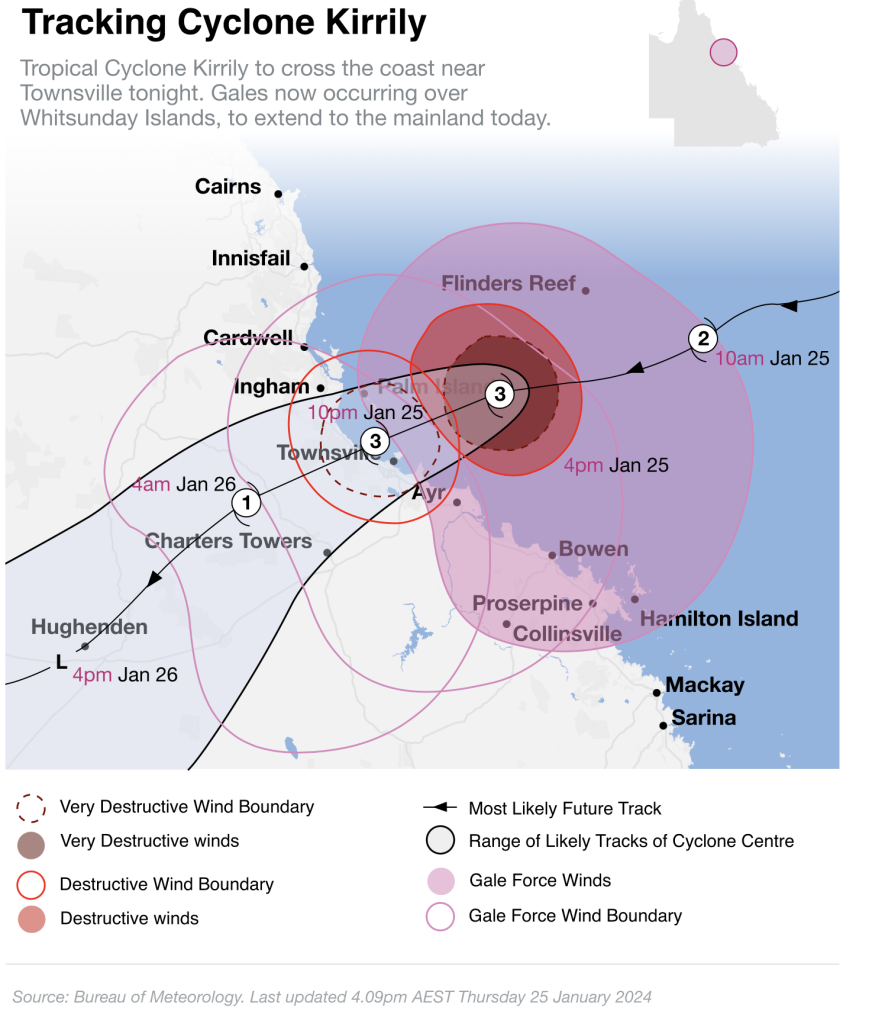
The basis of most Great Barrier Reef statistics is the survey. Get that wrong and add in an extraordinary amount of hubris – the type often found amongst academics who concern themselves with climate change – and we end-up with more lying headlines.

There are some major problems with the AIMS’ LTMP as a measure of total coral cover at the Great Barrier Reef:
- It does not consider how the distribution and abundance of corals varies with different reef habitats,
- It is a perimeter survey unlikely to include habitats with higher percentage coral cover,
- In not surveying shallower reef habitats, including the reef crest, it cannot measure the true impacts of cyclones or bleaching.
Meanwhile, Peter Ridd has gone to some effort over the last few years to suggest that the health of the Great Barrier Reef can be reduced to a single number representing coral cover based on these LTMP perimeter surveys.
And his political interest is not actually in this number but in the trend.
Yet even after John Brewer Reef took a direct hit from Tropical Cyclone Kirrily on 25th January 2024 pummelling much of the crest clean of coral and strewing coral around the reef perimeter, the LTMP registered no significant change in coral cover at this reef.
The latest number for total coral cover at the Great Barrier Reef, as extracted and calculated first by Ridd, and following his lead by Lomborg, include recent surveys of three large reefs in the central regions of the Great Barrier Reef – Chicken, Davies and John Brewer.
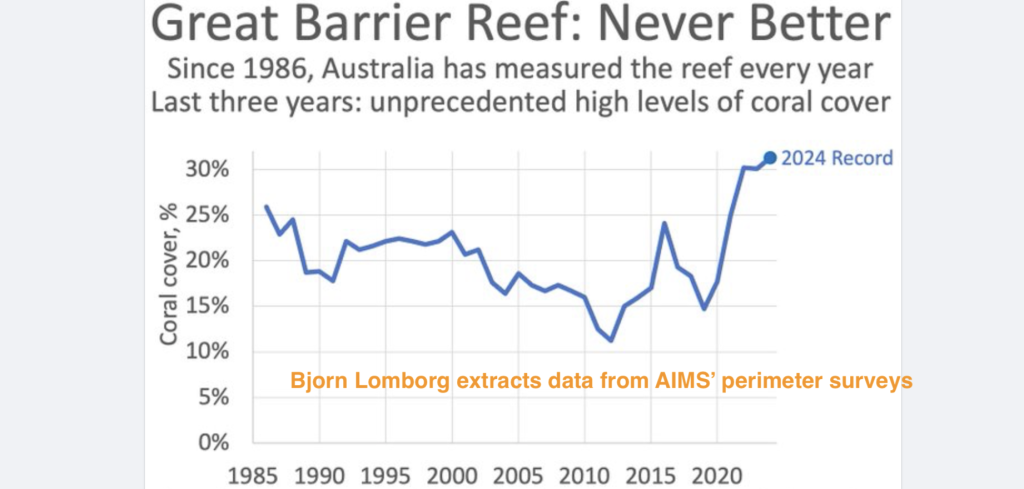
Until TC Kirrily these were exceptionally beautiful reefs in warm crystal-clear waters, with the most magnificent corals – reaching their climax as ecosystems with more than 100 percent coral cover in some places.
I write more than 100 percent, because these reef crests can be of densely packed corals, competing for space and especially light; corals growing over each other with so many fishes – crowded, colourful and bustling like little metropolises on top of platforms rising from the sea floor.
Then these bustling metropolises were obliterated – by Tropical Cyclone Kirrily. And they came to look more like Gaza.
When I visited these reefs soon after that cyclone, I found that many of the very largest of the plate and branching corals had been picked-up, turned-over and dropped-off the edge of sections of these reefs that rise from the sea floor, sometimes as platforms. There was coral strewn about their perimeters.
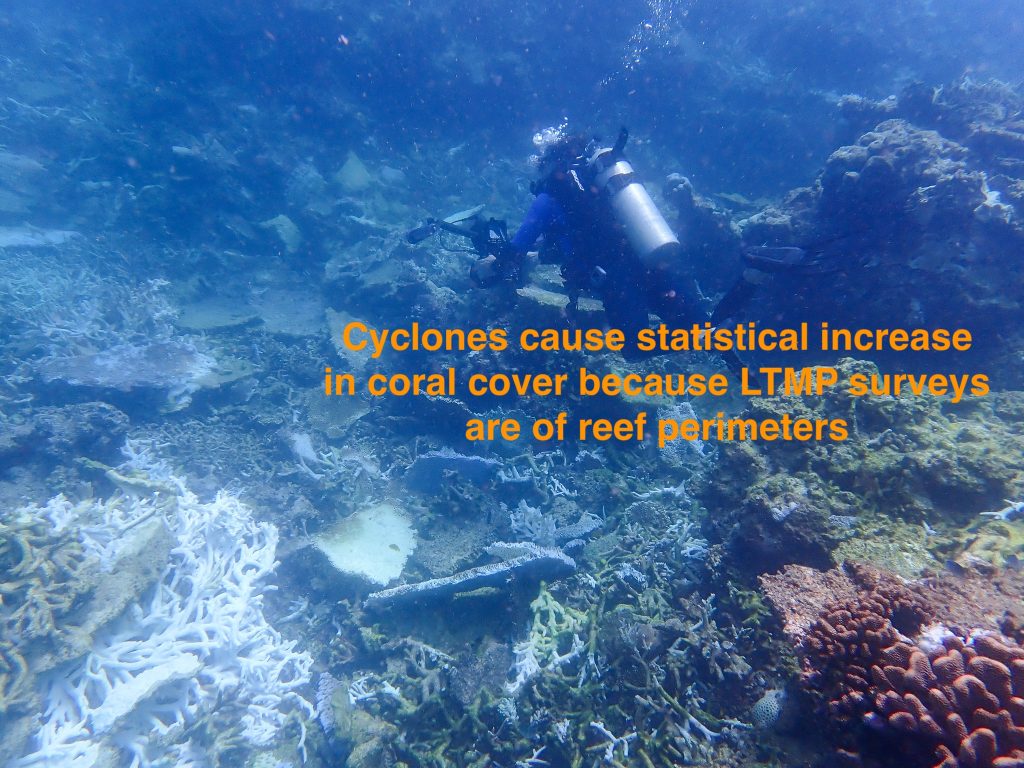
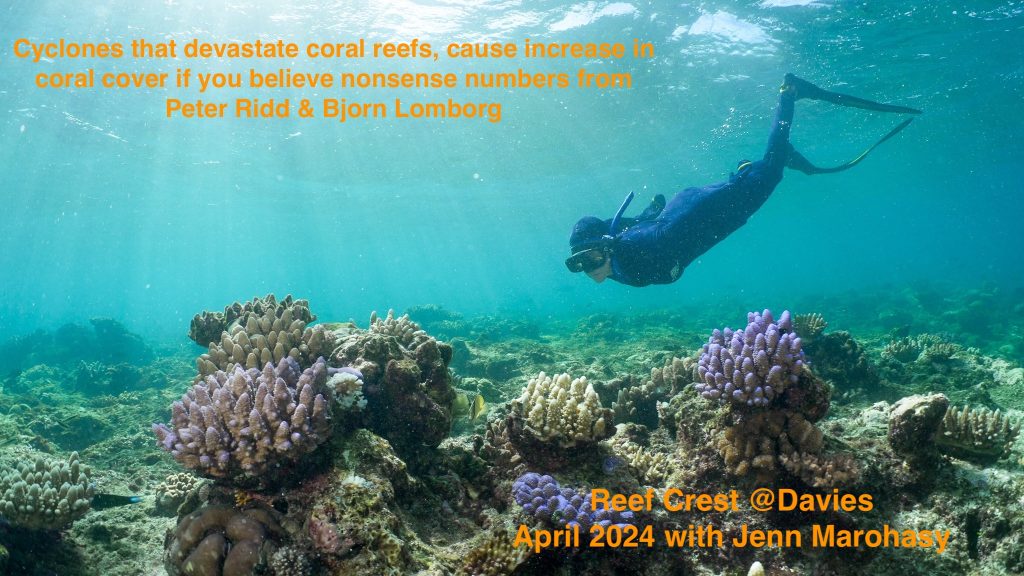
Indeed, the entire wall of coral that featured in the short film I made last November about the ‘Café Latte Coral’ at John Brewer Reef that entire wall of coral has collapsed. It has broken off from the reef crest proper and has fallen seven meters to the perimeter.
As absurd as it might seem, only now is their opportunity for these broken corals to be part of the AIMS’ surveys used by Lomborg and Ridd to claim record cover coral at the Great Barrier Reef.
The LTMP data that these academics rely on is from surveys that are only ever of the perimeter and at a depth of between 6-9 meters – where so much broken coral landed after TC Kirrily.
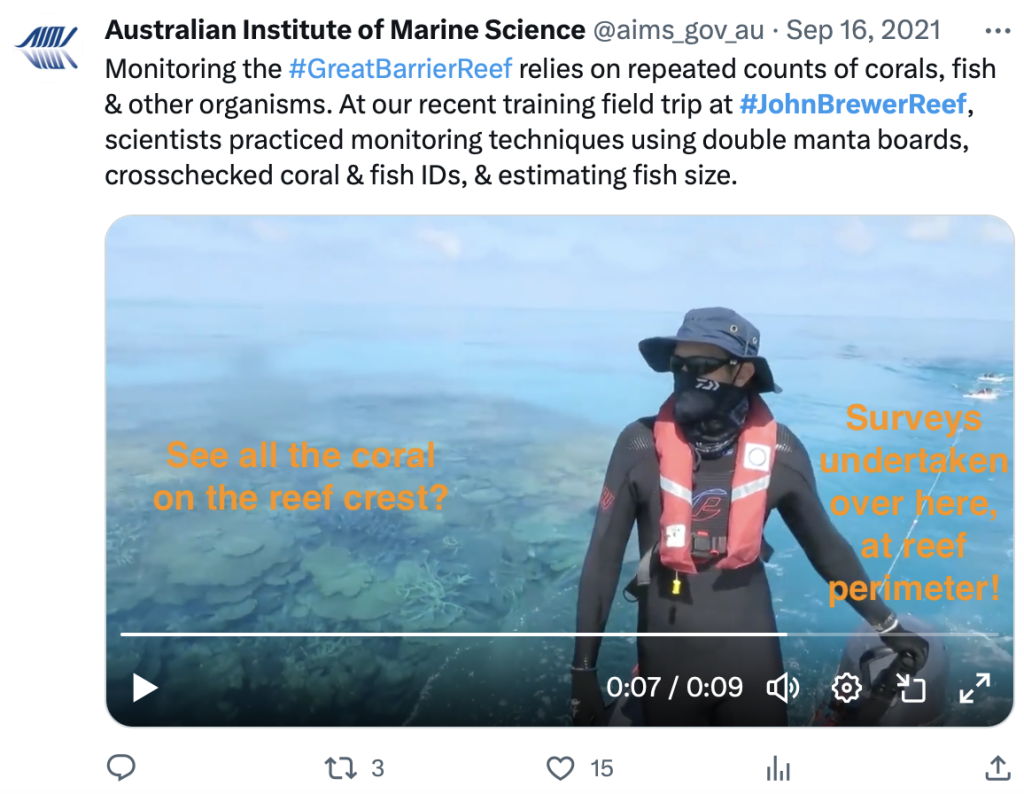


 Jennifer Marohasy BSc PhD is a critical thinker with expertise in the scientific method.
Jennifer Marohasy BSc PhD is a critical thinker with expertise in the scientific method.

Interesting observations. One after all expects massive damage to prominent reef structures during a tropical cyclone.
I have noticed a propensity to gloss over and exaggerate reef cover in order to counter alarmist accounts. The GBR is a big place.
Not sure if there is comprehensive data available on the effects of Cyclone/Hurricane/Typhoon activity occurring over coral reefs on the rest of the planet – but it would seem a necessary step in any ‘proof search’, to find such research information and compare.
GlenM, yes the GBR is a big place.
That’s why extensive, standardised surveys are essential to study its state. Flying a drone and diving on a few reefs contributes little.
Have you informed your readers that you delete posts that do not follow your train of thought?
****
Hi Karen
If that were true I would delete this train of thought.
BTW I am guessing that I know who you really are, and why you so dislike me. That is a pity. Because we could work together and contribute something useful. I forgive you.
Next time when I’m wide of Holbourne Island I will take in some of the reef. Weather/wind has not been conducive for nautical pursuits. By
Actual field work is difficult, costly, and informative.
Thank you.
“AIMS’ Long-Term Monitoring Program measures the status and trend of reefs in the Great Barrier Reef World Heritage Area.
Each year, our team of marine scientists spend more than 120 days at sea surveying between 80 and 130 reefs along the length and breadth of the Reef.”
How many reefs do you study Jenn?
*****
Thanks Karen.
The last time I did something systematic was a Pixie Reef back in 2021. The 360 photographs are here, https://jennifermarohasy.com/coralreefs/pixie2021/
Click on each of the photographs in the tables for a larger, more detailed view.
John Hultquist, yes actual field work is very expensive. That’s why data collected by reputable, well-funded institutions are more dependable than individuals diving on cherry-picked reefs.
Every time there is a big wildfire in the western USA, a boundary is shown on maps and an acreage is supplied as to the burning area. This makes headline news. After the fire is out, teams visit the land and record severity of the burned areas, and how much was not burned. The revised lower area burned is never reported in the media.
John Tukey wrote about getting approximate answers to the right questions rather than exact answers to the wrong questions.
It does not matter how many reefs AIMS claim to have studied if they cling to the absurd belief that aerial surveys and perimeter surveys have any credibility for determining a) coral cover and b) the ‘health’ of a reef – and ‘health’ can be much misunderstood and easily misrepresented for political reasons. Jennifer has provided numerous examples of reefs which AIMS claim to have surveyed where the reality is very different from what AIMS claim and their reports frequently contradict each other – John Brewer is a classic example of that gross incompetence; a reef with near 100% healthy cover over the top that was only surveyed at the perimeter and was designated badly bleached (before cyclone Kirrily). When a calcified reef crest surveyed from the air is designated ‘bleached’ (most likely caused by the fall in sea levels several thousand years ago) and the cause is laid at the feet of ‘climate change’, which is pure deception, then I think one is entitled to be extremely sceptical of the veracity and integrity of AIMS staff – Pixie Reef is a good example of that deception. When Prof Terry Hughes claims that ‘bleaching’ is a modern phenomenon, “these bleaching events are novel, they are a human invention due to global warming” as he did on a radio interview in 2016, then one is entitled to question his scientific competence and his ethics. Having an opinion based on perceived evidence is one thing, spouting obvious drivel and pretending it is fact is another. AIMS has become so politicised that it is increasingly difficult to decide which parts of their reports are reasonably accurate and a genuine attempt to provide relevant evidence and sensible analysis and which parts are manipulated for political reasons. Thus those of us not able to visit the GBR (even if we have experience of m any other reefs in different regions) have to rely on painstaking work done by independent volunteers like Jennifer and her colleagues – whose techniques AIMS would be well advised to copy.
Whilst I may disagree with some of her conclusions from time to time, which is only to be expected given some of the complex issues being discussed and is what proper scientific discourse, debate and challenge is about, I do not doubt her dedication to investigating and describing as rigorously as she is able and as close up as possible which is the only way to be sure of what one is seeing (or thinks one is seeing). I suggest that contributors try to be more constructive and remove their climate change blinkers.
Jenn, I don’t dislike you at all, I admire your dedication and passion.
I just disagree with your approach from time to time. So I post to provide an alternative view and avoid a conservative echo chamber. Such is the self-correcting nature of science.
****
Karen, Thanks for letting me know. Your kind note makes me feel more at ease.